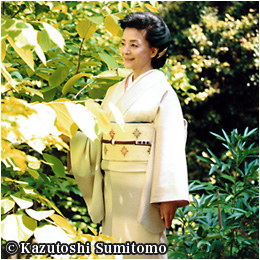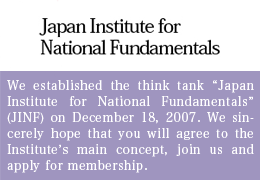Exploring the Wartime Experiences of the “Kibei”
On February 5, I visited the National Museum of Japanese History in the Tokyo suburb of Sakura City to see a special exhibition held under the theme of “Japanese Immigrants – in the United States and the War Era.” The main attraction of the day was a powerful documentary chronicling the life of Japanese Americans interned in the United States during World War II. Entitled “From a Silk Cocoon: Japanese American Renunciation Story,” the 60-minute film centers around the family history of Ms Satsuki Ina, a third generation Japanese American, and vividly depicts how “Kibei” Japanese Americans were treated before, during and after the war.
“Kibei” refers to American-born Japanese Americans with U.S. citizenship, who were sent to prewar Japan to receive Japanese education, then returned to live in their native country the United States before the Pacific War broke out. (“Ki” is the Chinese character for “return” and “bei” is the character for “America.”)
Satsuki Ina, Professor Emeritus of California State University in Sacramento, was charged with overall supervision of production of the film while also serving as co-director. She and her older brother Kiyoshi were born in a Japanese American incarceration camp where their parents were first interned during the war. Satsuki produced the documentary based primarily on a total of 180 letters exchanged between her parents after they were forced to live in separate camps. The museum hall accommodating 260 viewers was filled to capacity.
Satsuki’s grandfather was a first-generation Japanese immigrant who moved from his native Nagano Prefecture to San Francisco in 1903. After first working at a laundry, he joined the “Hochi Shimbun” – a local Japanese-language newspaper.
Explained Satsuki: “During those days, marriage between Japanese Americans and members of other ethnic groups was strictly prohibited under law, so my grandfather typically married a ‘picture bride’ without being able to see my grandmother Tokue until she sailed from Japan in 1911. Two years later, my father Itaru was born.”
Soon a younger sister also arrived, but, concerned about the weak constitution of the baby girl, Tokue decided to return to Japan with her two little children. In Japan, the children were given a chance to receive Japanese public education in spite of their U.S. citizenship. Itaru, who later returned to the U.S. at the age of 17, is a second-generation Japanese American – and a “Kibei.”
Meanwhile, Satsuki’s mother, Shizuko, was also a “Kibei.”
“Both my parents went back to the U.S. and graduated from high school there, but English really was their second language,” continued Satsuki. “They truly cherished Japanese culture; in fact, my father was so deeply immersed in Japanese culture he went on to learn to play the shakuhachi flute and compose 17-syllable haiku poetry. One of the most marked features of the “Kibei,” I believe, is a particularly strong attachment to Japanese tradition and culture. Until 1941, when the war between the U.S. and Japan broke out, my parents truly enjoyed the two rich cultures of Japan and the United States.”
.
Handled Like Animals and Criminals
However, the circumstances surrounding Japanese Americans in the U.S. at the time were severe. Irrational fear of Asians – the so-called “Yellow Peril” – began spreading across the western world after Japan triumphed over Russia in 1905. Alarmed by what a small nation in the corner of the Far East managed to achieve against a big Western power, Imperial Russia, President Theodore Roosevelt began formulating the U.S. navy plan “Orange,” which later was to constitute the basic strategy of the U.S. in its war with Japan. The word “Orange” referred to Japan.
In 1906, a national and international controversy erupted over a policy adopted by the San Francisco Board of Education aimed at segregating children of Japanese immigrants. Although this decree was nullified two years later under terms of a “Gentlemen’s Agreement” between the U.S. and Japan, racial discrimination against the Japanese still prevailed. In 1913, the California Alien Land Law – undoubtedly targeting the Japanese – was enacted to ban Japanese and Japanese Americans from purchasing land; a similar move quickly spread across other states.
In 1920, the Japanese government decided to prohibit “picture brides” from marrying Japanese and Japanese-Americans in the U.S., having become increasingly concerned that the on-going practice of marriage simply on the basis of a photograph of the would-be bride looked bizarre in U.S. society – which it feared would pour fuel on the fire of discrimination against the Japanese. Despite such measures taken by Japan, however, the U.S. further tightened restrictions on Japanese purchase of land, introducing the second California Land law. Then in 1924, the U.S. Immigration Act was enacted, totally banning immigration from Japan.
In the 1924 edition of “Survey of International Affairs” authored by Professor Arnold J. Toynbee, the Royal Institute of International Affairs of Britain pointed out that the anti-Japanese immigration law enacted by the U.S. government was “not attributable to economic friction nor an increase in the number of Japanese immigrants, but to a clash of civilizations of two proud nations, and ruled:‘Two races and two civilizations – the West and the Far East – were confronting one another across the Pacific, and this psychological background rendered the problem of Japanese immigration into California a peculiarly dangerous and at the same time a peculiarly important factor in the world.’” (“America’s War” by Tadae Takubo; Kobunsha 21)
The reference to “a peculiarly dangerous factor in the world” strikes one, in hind sight, as an ominously accurate analysis predicting what was to come 17 years later – the outbreak of the war between the U.S. and Japan. Japanese public opinion strongly objected to the immigration ban by the U.S. And the reaction was understandably even stronger on the part of “Kibei” Japanese Americans, who had been reared as proud descendents of the Japanese race.
In February 1942 – two months after the outbreak of the Pacific war – President Franklin Roosevelt signed Executive Order 9066, authorizing the incarceration of approximately 120,000 Japanese American residents across the U.S. in internment camps, resulting in the loss of virtually all of their assets.
Those incarcerated were detained in unsanitary, run-down stables, forced to take internee numbers by family, and fed shabby food. The internees were given a mandatory loyalty test, which demanded that they make clear their intention to join the U.S. armed forces and to be loyal to the U.S. It was a no-win situation for the internees. If they answered “yes,” they were drafted. If they answered “no,” then they were bound to be transferred to another camp with worse conditions. In many cases, expatriation (i.e., divesture of U.S. citizenship), coupled with deportation to Japan, was in the offing.
Satsuki’s father Itaru answered “no” to these two questions. It was beneath his dignity to tolerate being handled like an animal – or a criminal – after having endeavored all his life to be an exemplary U.S. citizen, engaging all the time in varied volunteer activities and paying taxes without fail.
Japan as the Mother Country and the Japanese
There are several rare photographs showing Itaru at one of the internment camps which were salvaged from materials found in the archives of the U.S. Department of Justice during the making of the film. One of them is Itaru’s mug shot taken from the front and the side – like a criminal – with a large name-tag hung from his neck. It recognizably shows what appear to be traces of acts of violence he had sustained on the cheeks and lips. Separated from his family, Itaru and Shizuko were segregated to the Tule Lake (California) prison camp – notorious for the worst climatic conditions among all the ten Japanese Americans relocation centers in the U.S. , with armed soldiers on the lookout around the clock. And then later Itaru was separated from his family to Ft. Lincoln, North Dakota – a Department of Justice internment camp for enemy aliens.
Looking back over the days of Japanese American internment by the U.S. government, Satsuki remarks:”It has been clearly documented that, throughout the war years, there was not a single case of treason or sabotage against the U.S. by Japanese Americans. And yet, discrimination in the U.S. against us did not simply vanish.”
Satsuki, her brother, and their mother finally had a reunion with Itaru a year after the war ended. When she started going to school after being released from the camp, a Caucasian teacher told her parents: “If you want your children to be real Americans, they should have American names.”
That was how little Satsuki came to be called “Sandy” and her older brother Kiyoshi “Kenny.”
“Actually, I did not know ‘Sandy’ was not my real name until I was 35,” confesses Satsuki. “After the war, my parents vowed never to speak their native tongue again, and insisted that we children study hard for success. To join mainstream American society, we were urged to erase every trace of our Japaneseness. My brother and I were instructed to turn the left cheek when someone struck us on the right cheek, work diligently, and endeavor to be gentle citizens who were 110 percent American.”
Despite such circumstances, Satsuki went on to become a professor in the Department of Counselor Education, School of Education, at California State University, Sacramento. Last October, when she first visited the National Museum of Japanese History in Sakura City, she was deeply touched to see a map on the wall showing where interned Japanese-Americans ended up.
“I was truly moved to realize that people in Japan haven’t really forgotten us,” she remarked. “When a guide accompanying me referred to Japanese immigrants and their off-springs as ‘our people,’ my heart was filled with a feeling of strong emotion. I must confess that it was the first time for me to recognize that my family and ‘Kibei’ Japanese Americans are a legitimate part of Japanese heritage.”
The mind-boggling ordeals that Japanese Americans had to endure during the Pacific War — most of the families torn apart and many banished from the U.S. under false charges of espionage and other treasonous acts – had devastating effects on them which lingered on long after the end of the war. Satsuki stresses she felt the old scar on her mind healed considerably as she felt warmly embraced by Japan – her other motherland – and its people, when the guide referred to her people as “our people,” which made her aware that the Japanese have not forgotten them.
Satsuki was very kind to say so, but, frankly, those moving words of hers made me soberly wonder if individual Japanese today really have not forgotten about matters of their past pertaining to Japanese immigrants in pre-war days, “Kibei” Japanese Americans who once lived and studied in Japan, and the war-dead. And, simultaneously, I began to wonder how Americans view matters having to do with their own past. Has the world’s biggest super power, deploying forces globally, really learned anything from its history?
(Translated from “Renaissance Japan” column no. 448 in the February 17, 2011 issue of The Weekly Shincho.)









[…] This post was mentioned on Twitter by news666, Youko Yamashita and remedy, ビジネスアンテナ. ビジネスアンテナ said: 【櫻井よしこ】 Exploring the Wartime Experiences of the “Kibei” http://bit.ly/gBaYID […]
Pingback by Tweets that mention 櫻井よしこ » Exploring the Wartime Experiences of the “Kibei” -- Topsy.com — 2011年02月18日 17:18